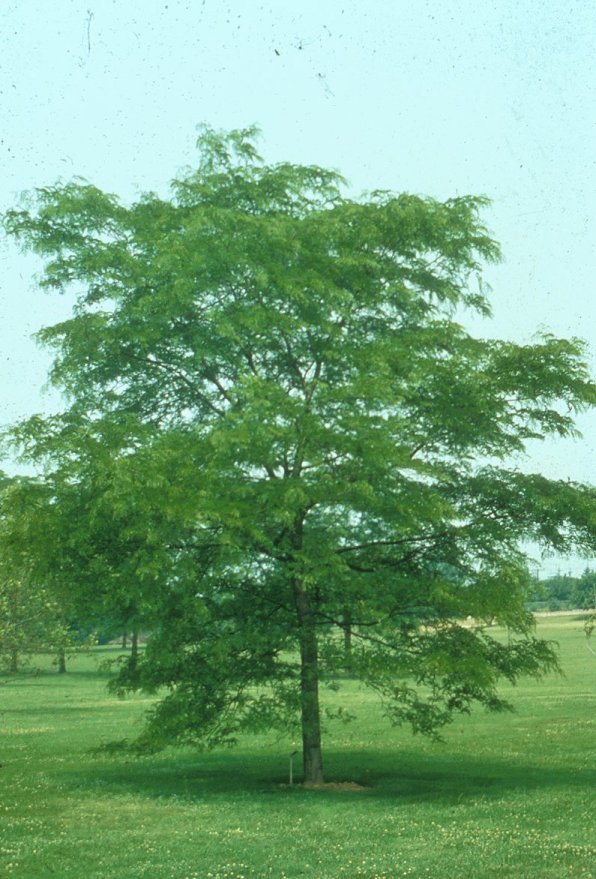| Botanical Name: Gleditsia triacanthos 'Shademaster' | |
| Common Name: Shademaster Honeylocust |

-
Anatomy
-
Culture
-
Design
Plant Type
Tree
Height Range
40-60'
Flower Color
White
Flower Season
n/a
Leaf Color
Light Green
Bark Color
Brown, Grey
Fruit Color
n/a
Fruit Season
n/a
Sun
Full
Water
Low, Medium
Growth Rate
Fast, Moderate
Soil Type
Sandy, Clay, Loam, Rocky, Unparticular
Soil Condition
Average, Rich, Poor, Well-drained, Dry
Soil pH
Acid, Neutral, Basic
Adverse Factors
n/a
Design Styles
Formal, Mediterranean, Ranch, Woodland
Accenting Features
Fall Color, Silhouette
Seasonal Interest
Summer, Fall
Location Uses
Background, Shrub Border, Lawn, Patio, Street Tree, Walls / Fences
Special Uses
Screen, Mass Planting, Shade Tree
Attracts Wildlife
n/a
Information by: Stephanie Duer
Photographer:
Photographer:
-
Description
-
Notes
Shademaster Honeylocust is a deciduous tree with upright, ascending branches and a spreading habit. It has small, pinnately compounded leaves, resulting in filtered, dappled shade. Fall color is yellow; the tiny leaves readily compost in the landscape. Grows about 45 feet tall and 35 feet wide. A good shade tree for the landscape, lawn, house, or sidewalk.
Withstands a wide range of conditions, including high pH, salts, soil type, and drought. Best growth occurs in rich, well drained soil wit hregular watering. Overplanting has led to increases in some diseases and pests. See the guide for planting and pruning instructions.